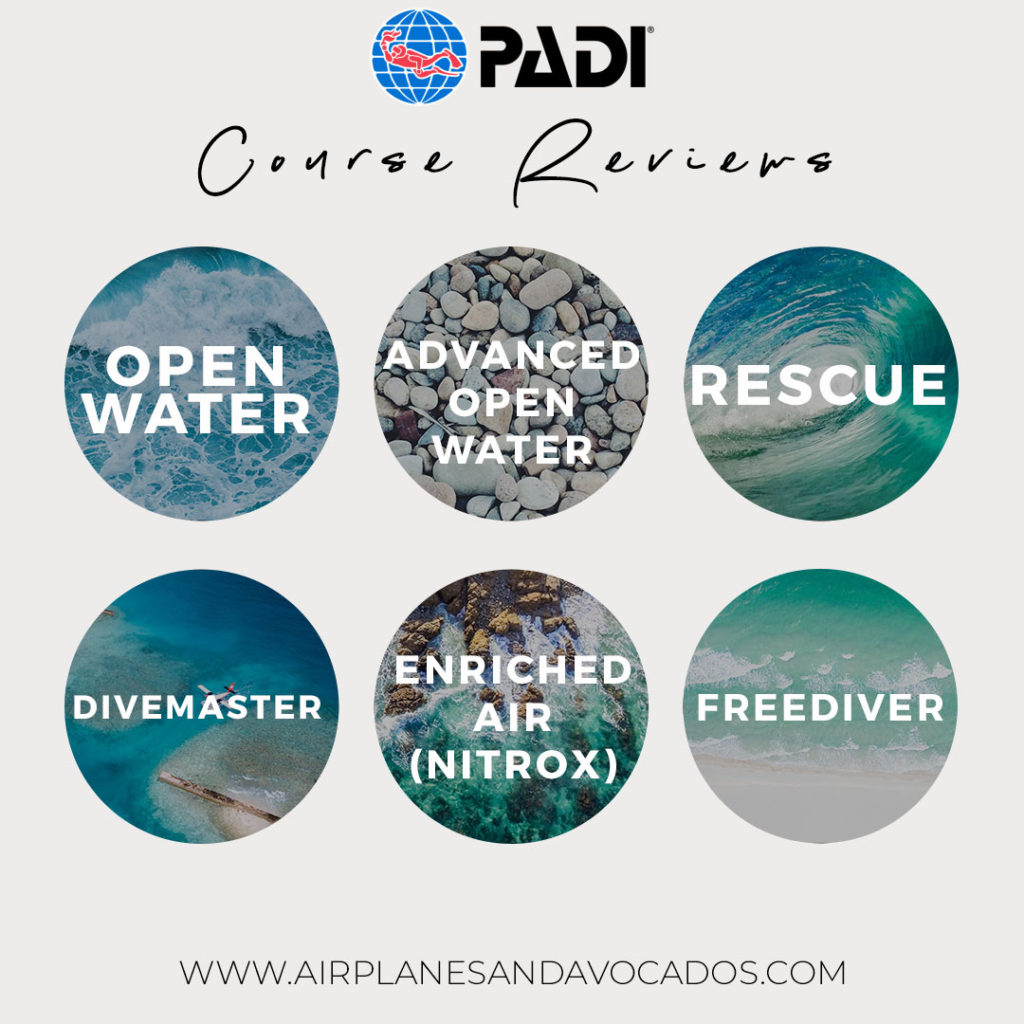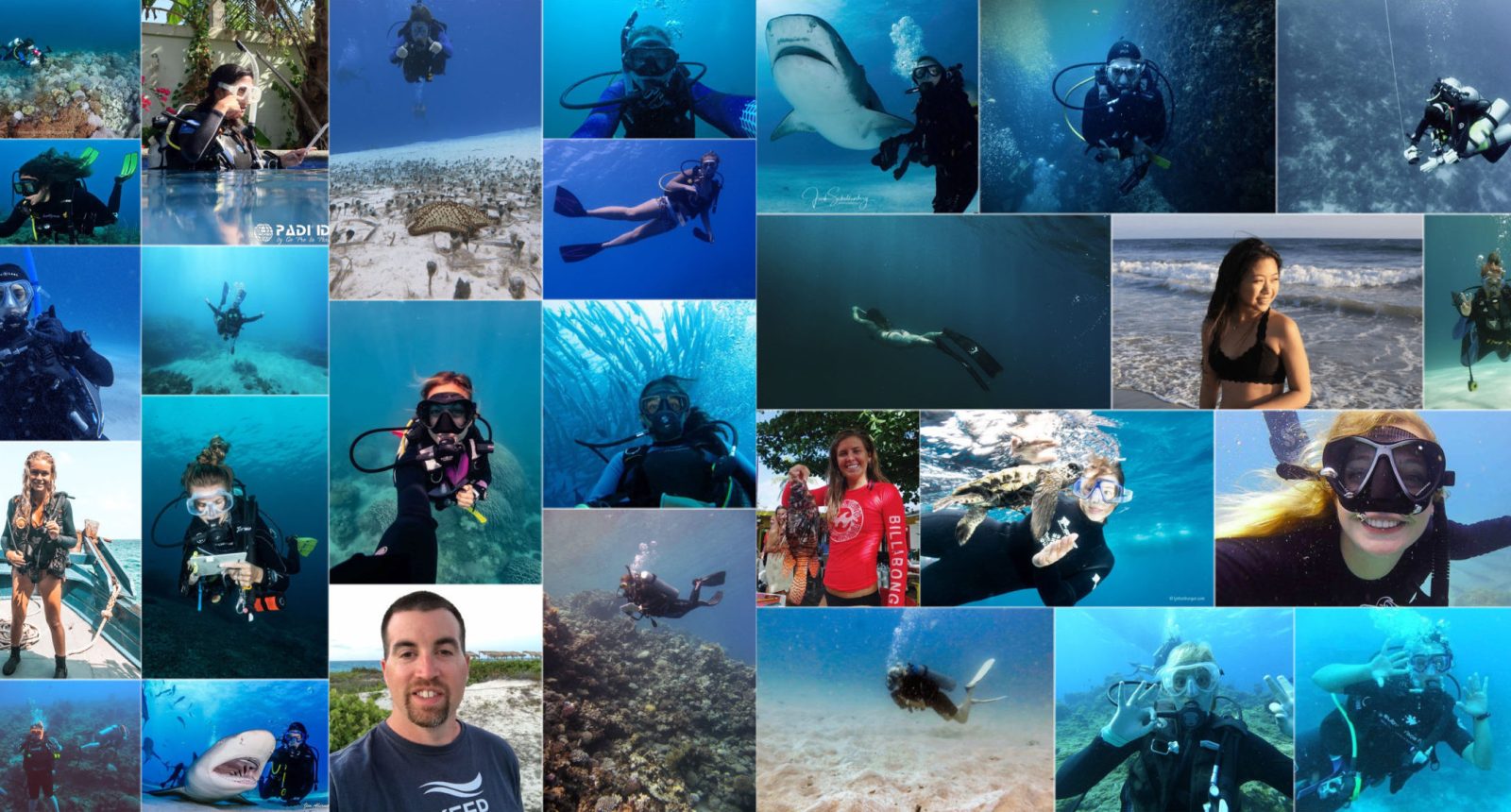

After you become a PADI Open Water certified diver, there is a very good chance that you’ll have caught the scuba bug for good and want to continue on in your dive training. The next step in dive training is PADI’s Advanced Open Water certification (AOW).
PADI’s Advanced Open Water certification
Despite what the name suggests, you don’t have to be an “advanced” diver to take the AOW course.
The course is designed to advance your dive training, so you can start your AOW as soon as you’ve finished your Open Water certification if you want!
The AOW course is probably one of PADI’s most straightforward courses. You’ll only need two days to complete it and there isn’t much new information to learn; it mostly builds on the knowledge and skills from PADI’s Open Water course. The course is designed to help build your confidence as a diver and expand your scuba skills through different adventure dives.
The PADI Advanced Open Water Diver course consists of a knowledge component and five open water adventure dives. There is no confined water component required for AOW.
Pre-Requisites
✓ 15 years old
✓ PADI Open Water Diver
Who Should Take this Course?
The biggest reason to take the AOW course is so that you can participate in deep dives. Without the AOW certification, you’re limited to diving only to a max depth of 60 feet without a guide. Becoming an Advanced Open Water diver dives you the freedom to dive deeper, which is really beneficial for hitting a lot of popular wrecks, which usually lie deeper than 60 feet. Aside from being able to dive deeper wrecks, the AOW certification is something you’ll need to obtain if you plan to do any further dive training, like becoming a Divemaster or Instructor. If you plan to make a career out of diving or acquire some more advanced certifications, get the AOW out of the way early.

Knowledge Component
Like most PADI courses there is a knowledge portion for this course in addition to the required open water dives. I highly recommend PADI e-Learning for the Advanced Open Water course. Like I said, there really isn’t much new information, most of it will be a refresher will a few new topics that build on your existing knowledge.
I took probably about eight hours total to do the e-Learning online and complete the quizzes. Each specialty dive has a learning component and quiz associated with it. Make sure you’re paying attention to this because you’ll need to get 100% on the quizzes at the end to pass and you’ll be asked some of the same questions again by your instructor when you show up to do your open water dives.

Open Water Component
The open water component of AOW consisted of some of the most fun dives that I’ve ever done. Unlike Open Water, where you spend most of your time in the water performing skills, there are only a few skills required in AOW and because you’re doing adventure dives each dive will be different and maybe even completely new to you!
Of the five adventure dives, you have to complete, two are required by PADI: deep dive and underwater navigation. After that, you can choose which three adventure dives you want to complete from a giant list. Keep in mind for some courses like UW Photography and Videography you may need to provide your own equipment and others like Shark Conservation may only be offered in certain locations.
In addition to PADI’s required deep dive and underwater navigation dive, I completed a night dive, underwater naturalist dive, and peak performance buoyancy dive.
Deep Dive
The deep dive is what PADI’s AOW is known for. At any PADI dive resort across the world, you cannot participate in a dive deeper than 60 feet without a guide unless you are AOW certified. There are no skills associated with this adventure dive. Your instructor will walk you through a quick recap of what you learned about deep dives during the knowledge component of your course and then you’ll help them drop the extra tank at 15 meters.
Underwater Navigation Dive
I really surprised myself by how much I loved the underwater navigation course. Prior to my dive, I was nervous and super convinced that I was going to be awful at compass skills and fail the course. However, using the compass turned out to be a lot easier than I thought it would be and I was surprisingly really comfortable and good with it. I think that this was the dive I learned the most on and will carry the skills with me through the rest of my dive career.
This was the most “skill heavy” of the five dives that I did because you need to complete a couple of tasks with the compass. Before the dive, you and your instructor will go over how to set a compass heading and practice on land. Once you get in the water you’ll practice swimming a certain kick cycle distances to create a pattern using the compass.
Night Dive
Before my AOW certification, I had never done a night dive – the thought of being out in the open ocean in the dark terrified me. However, I did my course on the Big Island of Hawaii, so there was no way I was passing up the opportunity to do the famous manta ray night dive. Luckily this iconic dive counts as your night adventure dive towards your AOW certification. For the night dive, there is only one quick compass exercise working with reciprocal headings before you get to go off and enjoy your dive.
This was another dive that I loved much more than I anticipated. Like I said, I was terrified of night dives, but since completing my AOW certification I’ve gone on to do a handful of more night dives an absolutely love them; they are hands down my favourite dives to do!
Underwater Naturalist Dive
The underwater naturalist dive is an adventure dive that focuses on species identification. This was recommended to me by the dive shop and I’m really happy that I did it. Your entire perspective on the ocean changes when you can actually identify and understand what you’re looking at. This is another dive that equipped me with skills I carry with me on every single dive; every time I’m in the water now, I’m searching for different aquatic life and challenging myself to see how many I can properly identify. Doing this dive in Hawaii was that much more special because the islands are filled with tons of different species that you can only find in Hawaii. This is another great skill to have if you plan on becoming a dive professional as leading dives usually requires you to be able to point out different aquatic life to guests.
For your AOW certification, there are no skills associated with this dive. Instead, you and your instructor will use a fish identification book before the dive to decide which species you’re going to try to find and the entire dive is essentially a super awesome scavenger hunt trying to find them!
Peak Performance Buoyancy Dive
From the second that you begin your scuba dive training two things are drilled into your head: breathe and good buoyancy makes a good diver. This adventure dive is the beginning of how to become a master of controlling your buoyancy. This is the most important skill that a diver can have, so while the adventure dive may not seem as appealing as others, it’s definitely one of the most rewarding ones to try.
For your Peak Performance Buoyancy dive, you’ll have to complete a couple of skills underwater like hovering, hovering with added weight, and knocking a weight over with your nose while maintaining buoyancy. (This one was tricky at first, but once you get it you’ll be a pro at buoyancy control!)
Cost Breakdown
The cost of your PADI Advanced Open water Diver will vary depending on where you complete the course and which adventure dives you choose to complete.
I completed my PADI Advanced Open Water Diver training at Big Island Divers in Kona, Hawaii. Here’s how their course price breaks down. (All prices are in $USD)
+ $167
(cost of PADI eLearning)
+ $475
(Private open water instruction for 5 dives)
TOTAL COST = $642
The PADI Advanced Open Water Diver course is a super fun and straightforward course. I highly recommend it, even if you’re not planning to do any further dive training because you’ll massively open up your dive opportunities once you can dive deeper sites (remember, most cool wrecks are deeper than 60 feet!).
CHECK OUT MY REVIEWS OF OTHER PADI COURSES:




